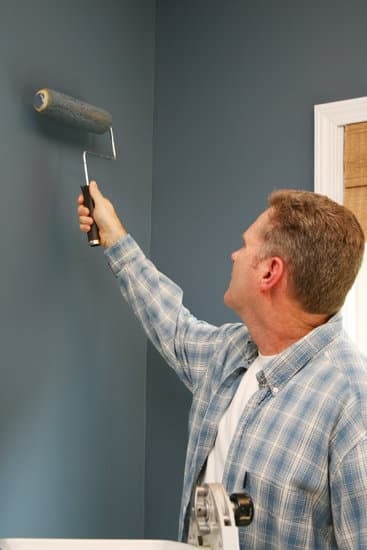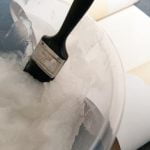Are you wondering how to report home improvement tax deductions on rental property? Owning a rental property comes with the opportunity to benefit from various tax deductions, including those related to home improvements. Understanding and correctly reporting these deductions can help you maximize your tax savings while maintaining compliance with IRS regulations.
When it comes to tax deductions for rental properties, distinguishing between repairs and improvements is crucial. Repairs are considered expenses that keep your property in good operating condition, while improvements enhance the value or extend the useful life of the property. Identifying eligible home improvements for tax deductions requires careful consideration of the IRS guidelines to ensure that your expenses qualify for deduction.
Keeping detailed records of your home improvement expenses is essential for accurate reporting on your tax return. This includes documenting invoices, receipts, contracts, and any other relevant information related to the improvement projects. By maintaining well-organized records, you can provide necessary documentation in case of an audit and ensure that you are claiming the correct deduction amounts.
Understanding the Difference Between Repairs and Improvements for Tax Purposes
When it comes to reporting home improvement tax deductions for rental property, it is essential to understand the distinction between repairs and improvements for tax purposes. Repairs are considered expenses that are necessary to keep the property in good operating condition, such as fixing leaks or replacing broken windows.
On the other hand, improvements increase the value of the property or extend its useful life, like adding a new roof or renovating a kitchen. It is crucial to differentiate between these two categories because they are treated differently for tax purposes.
To help clarify the difference between repairs and improvements, here is a breakdown of each category:
- Repairs: These are usually considered regular maintenance to keep the property in habitable condition. Examples include: fixing plumbing issues, repairing broken appliances, and repainting interior walls.
- Improvements: These are enhancements that add value to the property over time. Examples include: installing a new HVAC system, adding hardwood floors, or renovating a bathroom.
Understanding whether a project falls under repairs or improvements is crucial when determining if you can take advantage of tax deductions related to home improvements on rental property. Improvements can typically be depreciated over time, while repairs are generally deductible in the year they occur. Keeping track of these expenses separately will help when it comes time to report them on your tax return accurately.
In addition to distinguishing between repairs and improvements, it’s essential to consult with a tax professional if you’re unsure about which category your home improvement projects fall under. They can provide guidance on how to properly document and report these expenses on your tax return to maximize potential deductions.
By understanding this distinction and seeking professional advice when needed, you can ensure that you’re taking full advantage of any eligible home improvement tax deductions for your rental property while staying compliant with IRS regulations.
Identifying Eligible Home Improvements for Tax Deductions on Rental Property
When it comes to identifying eligible home improvements for tax deductions on rental property, it is crucial to understand what specific improvements qualify for tax benefits. Eligible home improvements are those that add value to the property or prolong its useful life, rather than just repairing existing features. Examples of eligible home improvements can include adding a new roof, installing central air conditioning, upgrading the electrical system, or renovating a kitchen or bathroom.
Consulting With a Tax Professional
For rental property owners looking to take advantage of home improvement tax deductions, it is highly recommended to consult with a tax professional. A tax advisor can provide valuable guidance on which home improvements qualify for deductions and how to properly report them on your tax return. They can also help ensure that you are maximizing your deductions while staying compliant with IRS regulations.
Documenting Home Improvement Expenses
In order to claim home improvement tax deductions on rental property, it is essential to keep detailed records of all expenses related to the improvements. This includes receipts, invoices, contracts with contractors, and any other documentation that proves the cost of the improvements. Without proper documentation, you may not be able to accurately report the deductions on your tax return. By maintaining organized records throughout the year, you’ll make the reporting process much smoother when tax time rolls around.
Keeping Detailed Records of Home Improvement Expenses
When it comes to reporting home improvement tax deductions for rental property, one of the most crucial aspects is keeping detailed records of all your home improvement expenses. This includes not only the cost of materials and labor but also any permits or professional fees associated with the project. By maintaining accurate records, you can easily demonstrate the legitimacy of your deductions in case of an audit by the IRS.
To properly report home improvement tax deductions on your rental property, it is essential to categorize your expenses correctly. This means distinguishing between repairs and improvements for tax purposes. While repairs are typically deductible in the year they are incurred, improvements must be depreciated over time. Understanding this distinction will help you accurately report your deductions and minimize any potential errors on your tax return.
In addition to categorizing expenses correctly, it is also important to track the depreciation of home improvements on your rental property. Depreciation allows you to deduct a portion of the cost of improvements each year over their useful life.
To calculate depreciation, you will need to know the initial cost of the improvement, its useful life according to IRS guidelines, and any salvage value at the end of its lifespan. Keeping detailed records of these figures will ensure that you accurately report your deductions and maximize your tax savings.
How to Calculate the Depreciation of Home Improvements on Rental Property
When it comes to reporting home improvement tax deductions for rental property, understanding how to calculate the depreciation of these improvements is crucial. Depreciation allows you to deduct the cost of the home improvements over a specific period of time, rather than all at once. This can provide tax benefits for rental property owners by spreading out the deduction over several years.
To calculate the depreciation of home improvements on rental property, you will need to determine the depreciable basis of the improvement. This includes the cost of materials, labor, and any other expenses directly related to the improvement. Once you have this total cost, you can use the Modified Accelerated Cost Recovery System (MACRS) to calculate the depreciation.
The MACRS system assigns a specific recovery period for different types of property improvements, such as residential rental property. You will need to determine the appropriate recovery period based on the type of improvement made to your rental property. By accurately calculating and claiming depreciation on your home improvements each year, you can maximize your tax savings and benefit from ongoing deductions for these expenses.
Reporting Home Improvement Tax Deductions on Schedule E of Your Tax Return
One of the most important steps in maximizing your tax benefits as a rental property owner is properly reporting home improvement tax deductions on Schedule E of your tax return. This section of your tax documentation is where you will detail all income and expenses related to your rental property, including any eligible home improvement costs that can be deducted.
Here are some key steps to follow when reporting home improvement tax deductions on Schedule E:
- Ensure that you have kept detailed records of all home improvement expenses, including receipts, invoices, and any other relevant documentation.
- Differentiate between repairs and improvements, as only improvements are eligible for tax deductions. Repairs are considered regular maintenance expenses and cannot be depreciated or deducted in the same way.
- Calculate the depreciation of your home improvements using the appropriate method allowed by the IRS, such as the Modified Accelerated Cost Recovery System (MACRS).
By accurately reporting your home improvement tax deductions on Schedule E, you can take full advantage of the benefits available to rental property owners. This can help lower your taxable income, reduce what you owe in taxes, and ultimately increase your overall profitability as a landlord. Be sure to consult with a tax professional or accountant for guidance on how to properly report these deductions and avoid any common mistakes that could lead to audits or penalties.
Avoiding Common Mistakes When Reporting Home Improvement Tax Deductions
When it comes to maximizing tax deductions for home improvements on rental property, avoiding common mistakes during reporting is crucial. One of the most common errors that landlords make is failing to distinguish between repairs and improvements for tax purposes. It is essential to understand that while repairs are deductible in the year they are incurred, improvements must be depreciated over time.
Another mistake to avoid is not keeping detailed records of home improvement expenses. Without proper documentation, it can be challenging to support your claimed deductions in case of an audit. Make sure to retain invoices, receipts, contracts, and any other relevant paperwork related to the home improvements you have made on your rental property.
One more common error when reporting home improvement tax deductions is incorrectly calculating depreciation. The IRS provides specific guidelines on how to calculate depreciation for various types of improvements. It is crucial to follow these guidelines accurately to ensure compliance and maximize your tax benefits.
| Common Mistakes When Reporting Tax Deductions | How to Avoid Them |
|---|---|
| Failing to distinguish between repairs and improvements | Understand the difference and depreciate improvements correctly. |
| Not keeping detailed records of expenses | Maintain thorough documentation for all home improvement costs. |
| Incorrectly calculating depreciation | Follow IRS guidelines for accurate depreciation calculations. |
Benefits of Taking Advantage of Home Improvement Tax Deductions for Rental Property
Home improvement tax deductions for rental property can provide significant financial benefits for landlords. By taking advantage of these deductions, property owners can reduce their taxable income and potentially lower their overall tax liability. This can result in valuable savings that can be reinvested back into the rental property or used for other business ventures.
One of the main benefits of home improvement tax deductions is the ability to offset the costs of making necessary repairs and improvements to a rental property. These deductions can help landlords recoup some of the expenses incurred from upgrading or maintaining their properties, ultimately making it more financially feasible to invest in necessary home improvements.
For example, if a landlord installs a new roof or upgrades the HVAC system in a rental property, they may be able to deduct a portion of these expenses on their taxes.
In addition to reducing taxable income, taking advantage of home improvement tax deductions can also increase the overall value of a rental property. By investing in renovations and upgrades that qualify for tax deductions, landlords can enhance the appeal and functionality of their rental units.
This can lead to higher rental rates, increased tenant satisfaction, and ultimately greater long-term profitability. Therefore, properly reporting home improvement expenses on your tax return is essential for maximizing both short-term savings and long-term returns on your investment.
Conclusion
In conclusion, properly reporting home improvement tax deductions for rental property is essential for maximizing tax benefits and avoiding potential issues with the IRS. By understanding the difference between repairs and improvements, identifying eligible home improvements, and keeping detailed records of expenses, landlords can ensure they are accurately reporting their deductions on Schedule E of their tax return.
Calculating the depreciation of home improvements is another important aspect to consider when reporting tax deductions for rental properties. This allows landlords to spread out the deduction over time and can significantly reduce taxable income. Additionally, avoiding common mistakes when reporting these deductions, such as misclassifying expenses or failing to accurately calculate depreciation, can prevent costly audits or penalties.
Overall, taking advantage of home improvement tax deductions for rental property can provide valuable financial benefits for landlords. By following proper procedures and guidelines outlined by the IRS, landlords can maximize their tax savings and ensure compliance with tax laws. It is important to consult with a tax professional or accountant if there are any uncertainties about how to report home improvement tax deductions on rental property accurately.
Frequently Asked Questions
How Do You Write Off Rental Renovations?
Writing off rental renovations involves categorizing the expenses as either repairs or improvements. Repairs are considered deductible expenses in the year they were incurred, while improvements are capitalized and depreciated over time. It’s essential to keep detailed records of all renovation costs for tax purposes.
What Is the Difference Between Repairs and Improvements on a Rental Property?
The key difference between repairs and improvements on a rental property lies in their impact on the property’s value and functionality. Repairs are intended to maintain the property in its current condition, such as fixing a leaky faucet.
In contrast, improvements enhance the property’s value or extend its useful life, like adding a new roof. Repairs are deductible expenses, while improvements are capitalized.
Can You Deduct Painting for Rental Property?
Deducting painting costs for a rental property depends on whether it is considered a repair or an improvement. If painting is part of routine maintenance to restore the property to its original condition, then it can be deducted as a repair expense.
However, if the painting significantly enhances the property’s value or extends its useful life, it should be classified as an improvement and capitalized instead of deducted in full during that year.

I’m thrilled to have you here as a part of the Remodeling Top community. This is where my journey as an architect and remodeling enthusiast intersects with your passion for transforming houses into dream homes.





